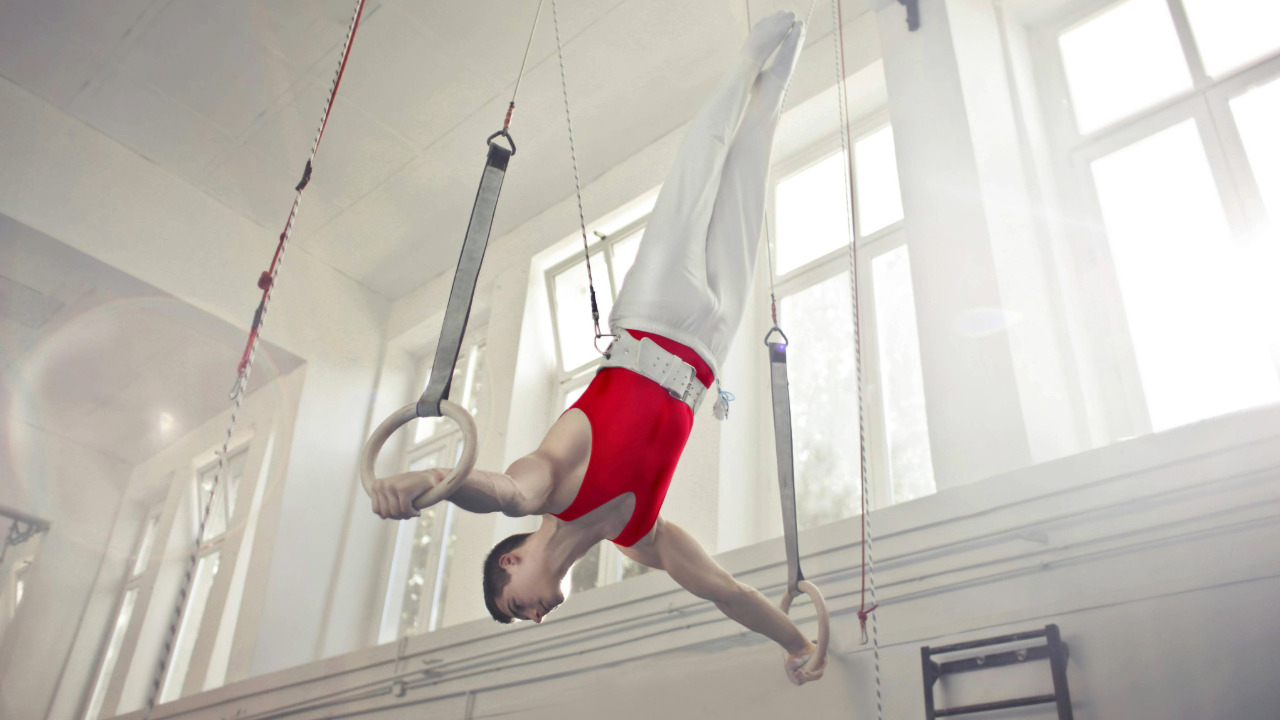The Graceful Fusion of Art and Sport
Gymnastics, often described as the perfect blend of artistry and athleticism, is a discipline that captivates audiences with its breathtaking displays of strength, flexibility, and precision. Originating from ancient Greece, where it was practiced as part of physical education and military training, gymnastics has evolved into a highly specialized sport celebrated for its grace, beauty, and technical mastery.
The Foundations of Gymnastics: Balance, Strength, and Flexibility
Artistic Gymnastics: Artistic gymnastics encompasses a variety of apparatus-based disciplines, including floor exercise, vault, uneven bars, and balance beam. Athletes showcase a combination of strength, flexibility, and acrobatic skill through choreographed routines set to music.
Rhythmic Gymnastics: Rhythmic gymnastics is characterized by elegant and expressive movements performed with handheld apparatus such as hoops, balls, ribbons, and clubs. Athletes demonstrate mastery of both body and apparatus as they execute intricate routines with fluidity and grace.
Trampoline Gymnastics: Trampoline gymnastics involves performing acrobatic maneuvers on a spring-loaded trampoline, combining height, amplitude, and aerial awareness to execute flips, twists, and somersaults with precision and control.
Artistic Tumbling: Artistic tumbling showcases powerful and dynamic tumbling passes performed on a spring floor, emphasizing speed, height, and execution. Athletes demonstrate explosive strength and agility as they execute complex sequences of flips, twists, and somersaults.
The Benefits of Gymnastics Training
Physical Fitness: Gymnastics promotes overall physical fitness by developing strength, flexibility, endurance, and coordination. Athletes engage multiple muscle groups simultaneously, leading to improvements in muscular strength, cardiovascular health, and neuromuscular coordination.
Mental Discipline: Gymnastics requires mental discipline, focus, and concentration to execute precise movements and routines under pressure. Athletes learn valuable skills such as goal setting, perseverance, and self-confidence, which translate to success both inside and outside the gym.
Injury Prevention: Proper training techniques and progressive skill development in gymnastics help strengthen muscles, ligaments, and tendons, reducing the risk of injuries. Athletes learn how to land safely, absorb impact forces, and maintain proper body alignment to prevent overuse injuries and promote long-term physical health.
Life Skills: Gymnastics instills important life skills such as teamwork, discipline, and resilience. Athletes learn to work collaboratively with coaches and teammates, overcome challenges, and adapt to new situations, fostering personal growth and character development.
Essential Elements of Gymnastics Training
Strength Conditioning: Gymnasts undergo rigorous strength conditioning to develop the explosive power and muscular endurance required for performing complex skills and routines. Strength training exercises such as bodyweight exercises, resistance training, and core stabilization drills are incorporated into training regimens to enhance overall strength and stability.
Flexibility Training: Flexibility is essential in gymnastics to achieve full range of motion in movements and prevent injuries. Athletes engage in regular stretching routines, targeting major muscle groups and joints to improve flexibility, mobility, and range of motion.
Skill Development: Gymnastics training focuses on skill development across a wide range of disciplines, from basic fundamentals to advanced maneuvers. Athletes progress through a series of skill progressions and drills, mastering foundational skills before advancing to more complex elements and routines.
Routine Choreography: Artistic gymnasts work with coaches and choreographers to create routines that showcase their unique strengths, style, and personality. Choreography incorporates elements of dance, music, and artistic expression, enhancing the overall presentation and storytelling of the routine.
Safety Considerations and Training Tips
Proper Supervision: Gymnastics training should always be conducted under the supervision of qualified coaches and instructors who prioritize safety, technique, and proper progression.
Equipment Maintenance: Regular inspection and maintenance of gymnastics equipment are essential to ensure safety and prevent accidents. Equipment should be properly maintained, inspected for wear and tear, and replaced as needed to minimize the risk of injury.
Progressive Skill Development: Athletes should progress through skill progressions and drills gradually, mastering foundational skills before advancing to more challenging elements. Rushing progression increases the risk of injury and hinders long-term skill development.
Warm-Up and Cool Down: Proper warm-up and cool-down routines are essential in gymnastics to prepare the body for activity, prevent injury, and promote recovery. Athletes should engage in dynamic warm-up exercises and static stretching routines before and after training sessions to optimize performance and reduce muscle soreness.
Gymnastics transcends mere physical activity, offering a unique blend of artistry, athleticism, and personal expression. From the graceful movements of rhythmic gymnastics to the dynamic power of artistic tumbling, gymnasts captivate audiences with their strength, agility, and precision. By embracing the foundational principles of balance, strength, and flexibility, athletes can unlock their full potential and experience the transformative power of gymnastics in their lives. So, whether you’re a seasoned competitor or a recreational enthusiast, step onto the mat, soar through the air, and embark on a journey of discovery and self-expression with the timeless art of gymnastics.



